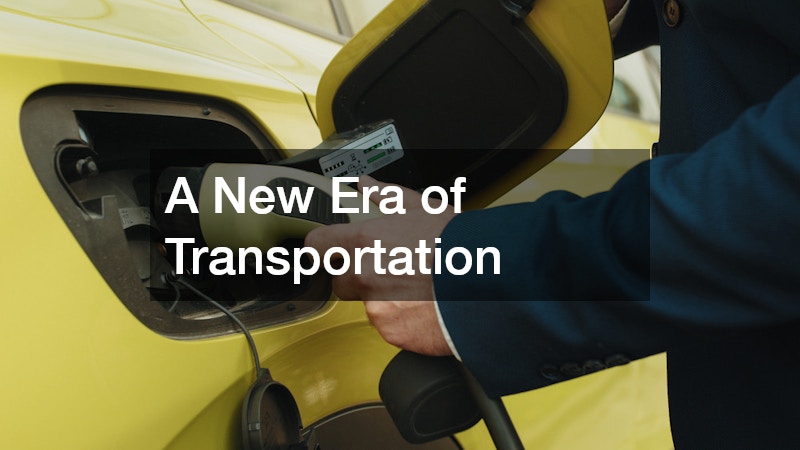Electric vehicles (EVs) are quickly becoming a central part of the modern transportation landscape. With growing concerns about climate change, fossil fuel dependency, and urban air pollution, consumers and automakers alike are turning to electric options as a cleaner, more sustainable solution. The rise of EVs marks a significant shift in how we think about mobility, energy use, and vehicle ownership. As adoption continues to grow, so does the need for infrastructure—especially when it comes to charging. That’s where home EV charger installations play a critical role.
A New Era of Transportation
Electric cars are not new, but their popularity has soared in recent years thanks to technological advancements, broader model options, and increased environmental awareness. Leading automakers have rolled out electric models that are not only functional but also stylish and high-performing. From compact sedans to powerful SUVs and even pickup trucks, EVs are available in a variety of shapes and sizes to fit nearly every lifestyle.
One of the biggest draws of EVs is their environmental benefit. Unlike traditional gasoline-powered vehicles, EVs produce zero tailpipe emissions. This means cleaner air in urban environments and a significant reduction in greenhouse gases when paired with renewable energy sources. As nations and cities implement stricter emissions regulations, the demand for EVs is expected to rise even further.
Charging Infrastructure: The Cornerstone of EV Adoption
While range and battery technology continue to improve, charging remains one of the most discussed aspects of EV ownership. Public charging stations are expanding across highways, shopping centers, and workplaces, but most EV owners do the majority of their charging at home. This makes home EV charger installations an essential component of the electric vehicle ecosystem.
Installing a charger at home provides convenience, efficiency, and peace of mind. Instead of relying on public stations or planning trips around charging availability, owners can plug in their vehicles overnight and start each day with a full battery. This seamless charging experience enhances the overall value and practicality of EV ownership.
The Advantages of Charging at Home
One of the most significant advantages of charging at home is the ability to refuel while the vehicle is parked, which for most people is the majority of the time. Whether you’re sleeping, working, or relaxing, your vehicle can be charging without any extra effort or time out of your day.
Home charging also allows EV owners to take advantage of energy management tools and smart charging features. Many systems can be programmed to charge during off-peak hours when electricity demand is lower. This not only reduces strain on the grid but can also contribute to a more sustainable energy system.
Additionally, home EV charger installations often offer faster charging times compared to standard wall outlets. With Level 2 chargers, for example, you can add dozens of miles of range per hour, depending on your vehicle and system capacity. This means even a short charging session can significantly boost your range.
Preparing Your Home for EV Charging
Before installing a charger, it’s important to assess your home’s electrical system. Most EV chargers require a dedicated 240-volt circuit, similar to what’s used for large appliances like dryers or ovens. A licensed electrician can evaluate your current setup and recommend any necessary upgrades or modifications.
Location also matters. Many people install chargers in their garages, but outdoor installations are also common and can be designed to withstand various weather conditions. Regardless of the setup, choosing a safe, reliable installation is key to long-term performance and safety.
As electric vehicles become more mainstream, builders and developers are beginning to include EV-ready infrastructure in new homes and apartments. This forward-thinking approach not only supports environmental goals but also adds value to properties in a market increasingly focused on sustainability.
Looking Ahead: EVs and the Smart Grid
Beyond individual convenience, the widespread adoption of EVs and home EV charger installations can contribute to a smarter, more resilient energy grid. Through technologies like vehicle-to-grid (V2G), EVs can one day store energy and return it to the grid during peak demand periods. This kind of bi-directional flow could help stabilize energy supply and reduce the need for additional power plants.
Smart chargers are already enabling dynamic load management, real-time usage monitoring, and integration with solar energy systems. As these capabilities evolve, they will further align transportation with broader energy efficiency and sustainability goals.
Electric vehicles are more than just a trend—they represent a permanent and necessary evolution in how we drive and think about energy. As EV ownership becomes the norm, home EV charger installations will be a standard part of household infrastructure, much like Wi-Fi routers and heating systems.
For consumers, this shift brings new opportunities to reduce their carbon footprint, gain independence from fuel stations, and participate in a cleaner energy future. For the planet, it signals a positive step toward reducing emissions and preserving natural resources.
As the road ahead unfolds, those who embrace EV technology and its supporting infrastructure are helping drive meaningful change—one charge at a time.




